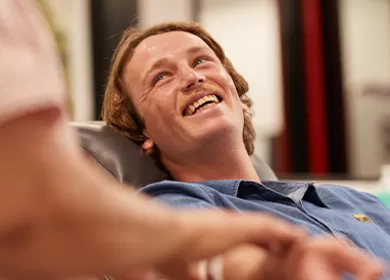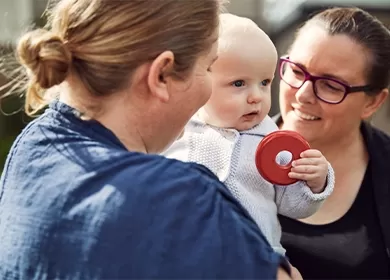Don’t have an account?
Select the donation type you’d like to make
Research finds Australian blood types not so bleeding obvious
A landmark study of 1.3 million Australian patients and nearly half a million blood donors has found the nation’s blood types have become more “positive”, citing an increase in ethnic diversity as the likely cause.
There are eight basic blood types, A, AB, B and O, each of which can be “positive” or “negative.” Giving a patient the wrong type can trigger a life-threatening immune response.
This research is the first to look at Australian patient data, providing a more accurate picture of the nation’s blood types – which to date has relied on data from first-time blood donors.
Using blood donor data from the early 1990s, it was thought approximately 19% of the population had a negative blood type, including 9% who were O negative – the universal blood type.
However, this study, conducted by Australian Red Cross Lifeblood lead researcher Dr Rena Hirani, uses patient data, which is more reflective of the population, to show that in fact only 14% of the population have a negative blood type, and importantly, just 6.5% are O negative.
Dr Rena Hirani said knowing the nation’s blood types and how they are changing is crucial.
“Your blood type is determined by your genetic background, in a similar way to your eye, skin and hair colour, and certain blood groups are more prevalent in certain countries.
“The changes we found in blood types match immigration patterns in Australia over the past 10 years, with almost a third of those living in Australia today being born overseas.
“This leads to a corresponding diversity in the people who need medical treatment – and their blood types, which gives us insight into what to expect from hospitals and donors in the future.
“If this continues, it’s possible in the future that we may see O positive more widely used in emergencies, as our O negative population continues to decline” Dr Hirani added.
The most “positive” people in Australia are those in the Northern Territory, followed by Victoria and then New South Wales.
Dr Hirani said the research also reflected the growing challenge to collect the universal O negative blood type
“O negative currently makes up 16 per cent of hospital orders, but we now know fewer than 7% of patients have that blood type.
“O negative can be given in emergency situations where a patient’s blood group is unknown and is often stocked in ambulances and rescue helicopters. Just one trauma patient can need huge quantities of blood in a short amount of time, which is why it's so important for us to have this on hand.
“Recruiting new O negative blood donors is an ongoing challenge for us as most people don’t know their blood type unless they’ve had a blood transfusion or have their blood type tested.
“If you are O negative, someone in your family might be too. We’re asking people to talk to their family and encourage them to donate.,” Dr Hirani added.
Lifeblood needs 12,000 new donors of all blood types every month to continue meeting the need for blood.





